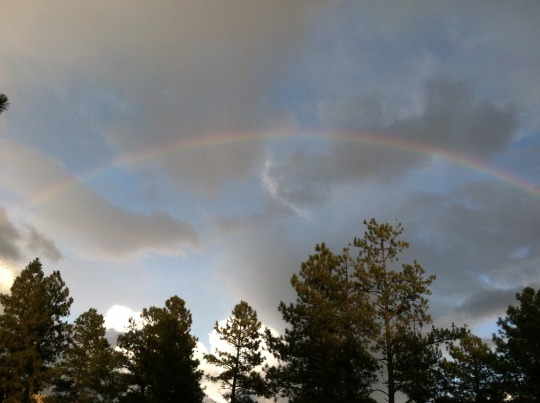PTSD and Me

The trauma
switch flipped on for me during three terrifying weeks in July 2010. After
investigating a murder for a book I was writing, I had unknowingly triggered
long-buried memories about my own violent childhood. For three decades I had
successfully kept it a secret – especially from myself – that as a little girl
I thought my raging father would kill me. Then at age 48, despite all the will power I
could summon, the truth exploded back into my life.
After
experiencing nightmares, panic attacks and insomnia, I landed in a
psychiatrist’s office. The diagnosis: Delayed onset post-traumatic stress disorder.
I was given a prescription for medication and told to seek counseling. In the
days that followed I was like a boat cast adrift on stormy seas and I had
absolutely no idea in which direction to find land. Not only was I rattled to
my core by the uninvited memories, but my adrenaline was pumping at full
throttle 24/7. My lean body lost 15 pounds, I jumped at shadows and dreaded the
death dreams that visited me every night in fitful sleep. Yes, I had survived a
violent childhood, but as illogical as it seemed, I feared I would not survive
what the memories were doing to me now.
My behavior, I
would later learn, was textbook for a child who grew up in an abusive home with
no comforting or protective adult presence. “Most adult children [of abuse] reach
adulthood with their secrets intact,” writes Judith Hermann M.D. in Trauma and Recovery: The Aftermath of
Violence from Domestic Abuse and Political Terror. But “as the survivor
struggles with the tasks of adult life, the legacy of her childhood becomes increasingly
burdensome. Eventually, often in the third or fourth decade of life, the
defensive structure may begin to break down…Survivors fear that they are going
insane or that they will have to die.”
I had excellent
support from therapists and friends, but I was also in my own private hell. I
was a person who had been the model of physical and mental health and now I
thought I was going crazy. Telling people that I had PTSD or that I was a
victim of child abuse did not fit the image they had of me. There also was the
societal pressure to “just move on.”
But move on to
where? Within a few weeks of the PTSD diagnosis I made my way to a meeting of a
12-step program called Adult Children of Alcoholics. As I sat sobbing in the
musty basement of the Federated Church in Flagstaff, Ariz., I shared my
terrible secret to a group of child abuse survivors who were not at all surprised
by what I said. Another woman there had been nearly suffocated as a little girl
when her mother held a pillow over her face. Other people told of experiences
similar to my own at the hands of drunken and raging parents. Every person in
that basement completely understood my raw terror and was unfazed by my story
because it was also their story.
My journey
toward healing started in ACA as I learned that PTSD is not a sickness. It is
the mind and body’s normal reaction to what is perceived as life threatening
circumstances. But for adults who have experienced chronic, prolonged trauma –
usually on the battlefield or growing up in abusive homes – this fight, flight
or freeze reaction becomes deeply imbedded in the central nervous system and
can make the challenge of recovering from PTSD daunting, and for some,
seemingly impossible.
“Healing trauma
requires a direction of the living, feeling, knowing organism,” writes
psychologist Peter Levine in his book Waking
the Tiger: Healing Trauma. The key to recovery, explains Levine, is not in
coping with the triggering aspects of PTSD but in dealing with the body’s
response to the original traumatic events and a “frozen residue of energy that
remains trapped in the nervous system where it can wreak havoc on our bodies
and spirits.” Just as the body’s automatic reaction to a bee sting causes the
skin to swell, traumatic memories induce a real-time fear response that
overwhelms the senses.
While
medication and talk therapy can help manage PTSD symptoms and are critical in
the early stages, I found that the essential next phase was tackling the
trapped energy – the poison that lies beneath the surface. Under the guidance
of a trained trauma therapist, I tapped into my body’s fear state by inducing
trembling and revisited those episodes when I was on the receiving end of my
father’s rage. I went there again and again through Trauma Release Exercises
(TRE) and Somatic Experiencing (SE) techniques. Every time I landed in those
terrifying moments, my therapist steered me toward a different outcome. Instead
of re-experiencing what actually happened, I chose escape. I envisioned calmly walking
out the back door of my childhood home and down my sunlit driveway into the
woods where I loved to roam. Eventually, that kid in me became convinced she
was finally safe and could start to let down her guard.
I do not mean
to trivialize or paint a happy face on the very real and harrowing experiences
of people impacted by violence and PTSD. But I want to share my own experience
as proof that there is a way to not only survive the effects of trauma but to
rise above it. After nearly five years of working on my recovery every single
day, I remain on what will be a life-long journey toward healing. There is no
reversing the past but I have found peace in the present.
For me there is
even a bright side. That switch that flipped in me turned my life from dark to
light.
Annette McGivney is the author of the forthcoming memoir Pure Land. To learn more go to: www.annettemcgivney.com. For more info on local meetings of Adult
Children of Alcoholics go to adultchildren.org.



